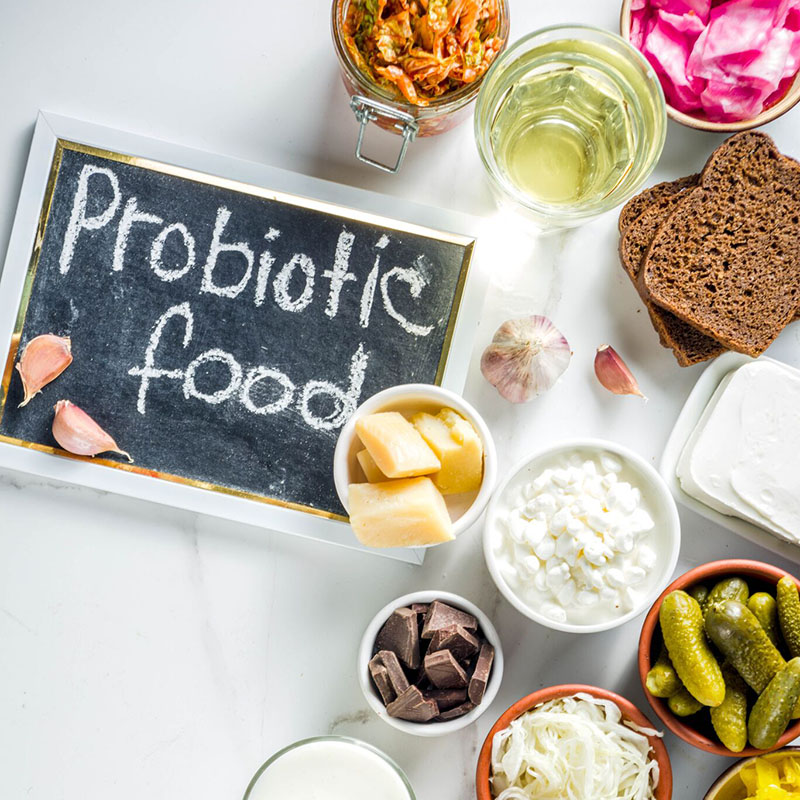
Probiotic
What are probiotics, and how do they work?
Probiotics are living organisms that are found naturally in foods such as yogurt, kimchi, sauerkraut, miso, and kefir. They are known as ‘good’ or ‘friendly’ bacteria as they compete for space and food against harmful bacteria and prevent them from settling in the gut.
Probiotic foods
While there are several different classes and types of probiotics, some of the most common include:
• Bifidobacterium
• Lactobacillus
• Saccharomyces boulardii, which is a type of yeast
Food manufacturers may also call probiotics “live culture” or “active cultures.” Many fermented products contain probiotics, which means the bacteria in them are still living. Often, the food production process destroys living bacteria. If a product is available on a shelf and is not refrigerated, it may not contain live and active probiotics.
What are the different types of probiotics?
There are numerous types of probiotics that each has different characteristics. They may be combined with others or appear on their own in powder, tablet, or liquid dietary supplements. At the moment, foods that naturally contain probiotics are not eaten regularly in the UK, so supplements are becoming more popular. The most common probiotics include lactobacillus acidophilus and bifidobacterium. These differ as they make up different types or strains of bacteria for various clinical conditions. Lactobacillus acidophilus has been clinically shown to lower the incidence of antibiotic-associated diarrhea. As a result, a shorter length of stay would be in hospital for some. To experience this benefit, a vast quantity of food containing probiotics would need to consume. It is, therefore, easier and more effective to take a recommended probiotic.
Examples of dairy products that contain probiotics include:
• aged cheeses, such as cheddar, gouda, or mozzarella
• kefir, a probiotic milk drink
• traditional buttermilk (must not be cultured)
• yogurt
Not all foods must be dairy to contain probiotics. Examples of other probiotic foods include:
• non-dairy yogurts
• fresh, sour dill pickles
• kimchi
• kombucha, a fermented tea
• miso
• natto, a food made from fermented soybeans
• sauerkraut
• tempeh, a popular meat substitute
• water or brine-cured olives
What are the risks of probiotics?
Generally, probiotics are safe for healthy individuals. Those with a compromised immune system may be at risk and should seek advice from a specialist dietitian or GP before starting.
How does food affect the gut microbiota?
The food you eat plays an important role in the balance of good and bad gut bacteria. For example, high sugar and high-fat diet negatively influence gut bacteria and may contribute to insulin resistance and other conditions. Once you regularly feed the toxic bacteria, they can grow faster and colonize easier than as many helpful bacteria to prevent them from doing so. A higher body mass index (BMI) can cause growing unhealthy gut flora in the body.




